Is Loopring (LRC) a Good Investment? In-depth Analysis and Near to Longer-Term Expectations
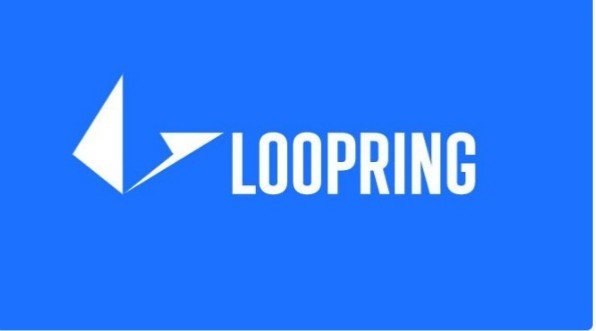
Investing in cryptocurrencies can be incredibly lucrative but it can also be extremely risky. Not only are they highly volatile but there are thousands of cryptocurrencies to choose from, so managing your risk and choosing the right ones to invest in are vital to one’s success.
Another important factor to successfully investing in cryptocurrencies is to have a deep understanding of the cryptos you’re investing in and the greater crypto space as a whole.
So, if you take a step back and look at the greater crypto space, what do you see?
I’ve noticed these things:
There are more than 5,000 cryptocurrencies
The primary use case for crypto, as a whole, is trading, speculating, and investing
The most successful crypto businesses are cryptocurrency exchanges
Crypto is used among crypto enthusiasts in the crypto community (it has yet to go mainstream with real-world use cases)
With these points in mind, it’s clear to me that a good cryptocurrency to invest in would be one that addresses the points above by serving the crypto industry as a whole. It should be something that provides players in the crypto industry with value by serving a purpose and bettering their experience.
That being said, one cryptocurrency that might be worth investing-in is Loopring (LRC) – an innovative crypto integral to its decentralized exchange protocol in which scalable decentralized exchanges (DEXes) can be built on.
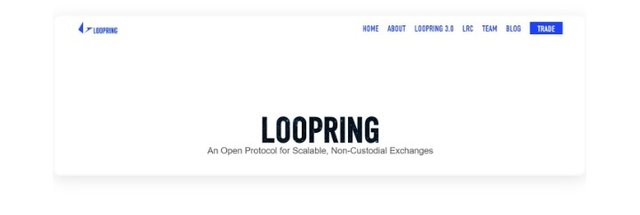
Loopring is potentially an excellent crypto to invest in because it is building the foundation in which a DEX application is built on. It’s attempting to provide all of the necessary components and rules for decentralized and secure trading of digital assets through peer-to-peer transactions that are automatically settled on a distributed ledger – which is something that the crypto industry deeply desires.
Therefore, if Loopring successfully becomes the underlying DEX infrastructure for digital assets, it could become one of the most valuable protocols in the world and play an integral role in the crypto industry.
Now, for the remainder of this article, we’ll take a deep dive into Loopring (LRC). We’ll look at its history, its launch and distribution, its price action, its level of adoption, development, and unique features it offers.
By the time you’re done reading, you’ll have a fundamental understanding of whether or not Loopring (LRC) is a good investment.
Loopring (LRC) - A Brief Summary & History
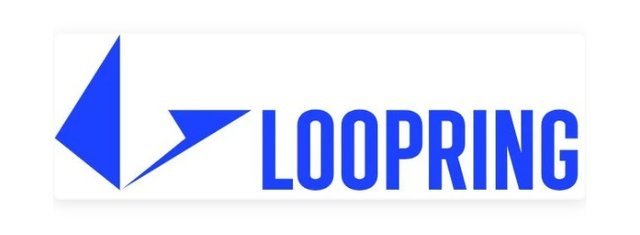
Loopring website homepage
The Loopring (LRC) project and the Loopring Foundation were founded on June 22, 2017, by Daniel Wang who also serves as CEO of the Foundation. Other key members of Loopring’s core team include Jay Zhou (CMO) and Johnston Chen (COO).
Prior to Loopring, Daniel had a variety of experience in the technology sector. He served as a tech lead and software engineer at Google, he co-founded Yunrang Technology and Coinport Exchange and was the Senior Director & Blockchain Researcher at Zhongan Technology.
While these aforementioned positions are impressive, Daniel moved onto bigger and better things when he came up with the idea for Loopring in October 2016 – when he experienced numerous shortcomings with centralized exchanges.
Centralized exchanges suffer from many problems and they simply don’t align with the ideals of decentralized digital currencies.
Issues with Centralized Exchanges
Centralized exchanges are vulnerable to hacks and attacks (users can lose their crypto as well as sensitive identifying information).
Centralized exchanges must be trusted to not pull an exit scam and steal everyone’s money or sell sensitive user data.
Centralized exchanges require users to provide identifying know-your-customer (KYC) information (users cannot stay anonymous).
Centralized exchanges set limits on how users control their money (deposit and withdrawal limits).
Centralized exchanges experience server downtimes and unexpected “maintenance periods” where traders cannot access their funds or trade.
With all of these issues in mind, it’s easy to understand the overwhelming need for fast, easy, and secure decentralized exchanges – which is exactly what Loopring intends to provide.
Loopring’s Vision & Features
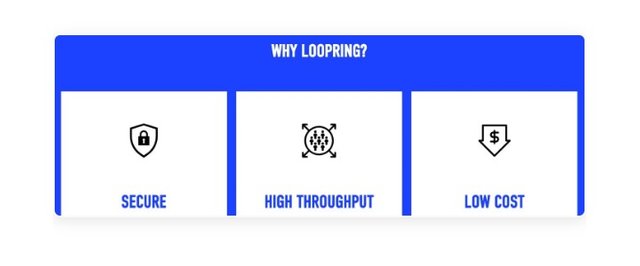
Loopring was created to provide an alternative to centralized exchanges by building an open protocol and underlying infrastructure in which anyone can use to build high-throughput, non-custodial, orderbook-based exchanges on Ethereum.
Loopring accomplishes this vision by leveraging Zero-Knowledge Proofs called zk-SNARKS, which verifies data without revealing its underlying information and enables a scalable service while maintaining security on the underlying blockchain.
Key features of the Loopring orderbook-based DEX protocol include:
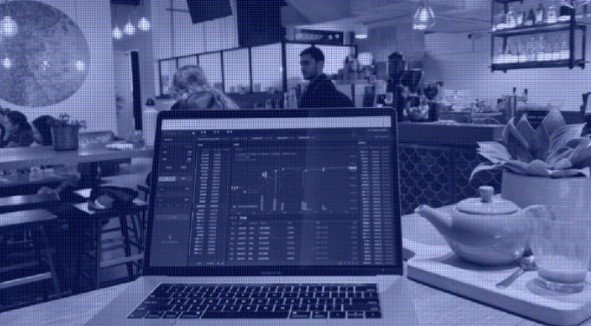
Security
Loopring is an open-source, audited, and non-custodial exchange protocol, which means the Loopring ecosystem is trustless. Crypto assets are always under the users’ control and secured by the decentralized Ethereum blockchain.
High Throughput
Loopring batches thousands of transactions together, verifies them off-chain and submits them to the Ethereum blockchain as one with verifiably correct execution via ZKPs. The performance of the underlying blockchain does not bottleneck DEXes built on Loopring.
Low Cost
The Loopring protocol performs its intensive operations such as order-matching and trade settlement, off of the Ethereum blockchain. Not only does this increase speed and throughput, but it also dramatically reduces gas consumption, which results in incredibly low settlement costs.
Implementation
The Loopring protocol makes it easy for developers to build DEXes. They can choose to build their own relayer backend systems by following Loopring's protocol rules and detailed documentation. Or developers can use Loopring Technology's production-ready Relayer-as-a-Service to launch a DEX more quickly.
Loopring (LRC) - Launch & Distribution
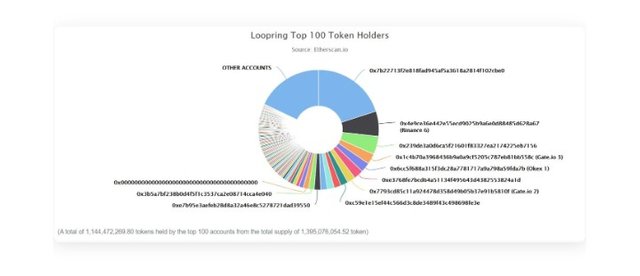
One of the most important things to understand when deciding whether or not a cryptocurrency is a good investment is to know how it was launched and distributed. You want to make sure the coin’s supply is not too centralized but rather fairly distributed.
In the case of Loopring, the Loopring Foundation held its initial coin offering (ICO) between August 1–16, 2017. The sale launched with the goal of raising a minimum of 50,000 ETH and a maximum of 120,000 ETH.
By the end of the token sale, the foundation was able to raise its maximum cap of 120,000 ETH (worth $45 million at the time) by selling LRC tokens at a price of $0.06 per LRC.
At the time of the ICO, the Loopring Foundation minted a total of 1,374,813,985 LRC tokens which is its current total supply. As for Loopring’s circulating supply, there are 1,008,254,181 LRC tokens in circulation.
During the ICO, ~60 percent of the total LRC supply was sold to investors and the remaining 40 percent of LRC tokens were reserved for and distributed to the Loopring team.
All in all, Loopring’s LRC token launch was very similar to most other cryptocurrency token launches, which are not very fairly distributed. However, the Loopring team has since offloaded many of their LRC token holdings and the project appears to be fairly distributed now.
LRC token holders and distribution
Loopring (LRC) - Development & Adoption
Since Loopring’s inception in June 2017, the Loopring Foundation has released four major versions of the Loopring protocol, each of which has included new/changed/removed features.
See an overview of these versions and their features below:
Loopring 1.0
Ring-Matching
Order-Sharing
Non-Custodial
Loopring 1.5
Ring-Matching
Order-Sharing
Non-Custodial
Dual-Authoring
Loopring 2.0
Ring-Matching
Order-Sharing
Non-Custodial
Dual-Authoring
Any-Token-as-Fee
LRC-Burning
Loopring 3.0
Non-Custodial
LRC-Burning
Trade-Token-as-Fee
zkRollup
LRC-Staking
High-Throughput
Low-Cost
Upgradability
Loopring 3.0
Loopring 3.0 is the latest, fastest, and most forward-looking Loopring protocol that provides solutions to the challenges plaguing current decentralized exchanges.
For instance, Loopring 3.0 provides DEXes with much higher performance without a tradeoff in security, an extremely low settlement cost, and multiple upgradeability options for DEXes.
High Throughput
Loopring 3.0 can settle up to 2,025 trades per second while guaranteeing the same level of security as the underlying Ethereum blockchain. This is made possible with the protocol’s newly added features called zkRollup and On-Chain Data Availability, or OCDA.
For the first time ever, Loopring can now match the performance of custodial centralized exchanges with its new and improved Loopring 3.0 protocol.
Settlement costs are now as low as $0.000042 USD per trade
This blows both the centralized and decentralized exchange competition out of the water, and it's so low that it covers the gas for Ethereum transactions and the cost of proof generation on cloud computing platforms.
To put Loopring 3.0’s low settlement cost into perspective, the average stockbroker fee in the US is in the range of $2 to $7 USD per trade.
Deployment
Loopring 3.0 supports multiple upgradeability options for DEXes powered by Loopring’s technology. DEX owners can choose automatic upgradeability which automatically upgrades their DEX to new minor versions or manual upgradeability which allows DEX owners to evaluate new protocol releases before upgrading.
All in all, the Loopring 3.0 protocol enables anyone to build high-performance, non-custodial, orderbook-based exchanges on Ethereum.
Loopring.io – The first zkRollup Exchange
Loopring Exchange – Loopring.io
On February 27, 2020, Loopring launched the Loopring Exchange, loopring.io, which is the first publicly accessible zkRollup exchange on Ethereum’s mainnet.
Loopring Exchange Features:
100% non-custodial
Inherits the security guarantees of Ethereum
Capable of throughput 1000X greater than the current leading layer-1 DEXes
600x cheaper settlement costs than the current leading layer-1 DEXes
The Loopring Exchange is still very new (as of March 2020) and therefore supports only 4 trading pairs: ETH-DAI, ETH-USDT, DAI-USDT, and LRC-ETH. The exchange plans to support more tokens that meet liquidity requirements and move the Ethereum project forward.
Besides the proprietary Loopring Exchange, other entities are deciding to use the Loopring 3.0 protocol as well, including the WeDEX exchange, which was the first exchange to build on top of the Loopring protocol.
Loopring (LRC) - Price Action & Market Structure
Now that we have a solid understanding of what Loopring (LRC) is, who created it, how it was launched, and how its development is going, let’s dive into its price action.
After all, when you put all of Loopring’s fundamentals aside, all you have left is LRC’s price action, and some people would argue that technical analysis is more important than a crypto’s fundamental analysis.
That being said, let’s get started on some Loopring (LRC) technical analysis.
3-month LRC price chart from app.santiment.net
As you can see from the LRC cryptocurrency price chart above, Loopring has been performing very well in 2020. Its recent price action resembles the very beginnings of a bull market and if the price can hold above its low of $0.034 that we saw in mid-February, then I would say LRC is looking very strong and ready to push higher.
So, we’ve looked at Loopring’s short-mid term price action and established that it's looking bullish. However, for Loopring to be considered a good investment, we must look at its macro price structure as well.
In the price chart above, you are looking at the entire price history of LRC from its beginnings in August 2017 to March 2020. As you can see, LRC is priced quite low, currently sitting at just $0.040 as of March 3, 2020, while its all-time high was $1.97 on January 10, 2018.
That being said, Loopring has a long way to go before it reaches its ATH. But its recent price action coupled with its advancements in development and the recent release of Loopring 3.0, it looks like Loopring has some real strength and can push back up there.
To further support the bullish case for Loopring (LRC), just look at the price chart above. LRC recently broke above extreme resistance at $0.032 and came back down to test it as support, where it then burst back upwards. This is an extremely bullish sign as it shows investor confidence in the project and puts its price back above a key level of market structure.
All in all, based on Loopring’s (LRC) recent and macro price action, I would say that Loopring (LRC) is a really good investment right now with immense upside potential.
Conclusion
If you’re involved in the crypto space, you know this industry is here to stay and that it’s only getting bigger and bigger. Digital assets and cryptocurrencies are an inevitable part of our future and there is an overwhelming need for viable decentralized exchanges where we can trade and transfer value between digital assets.
This is why the Loopring protocol is such an important project – it’s a decentralized exchange protocol that’s building the foundation in which secure, fast, and scalable non-custodial, orderbook-based exchanges can be built.
If Loopring captures even a fraction of the decentralized exchange market, the Loopring protocol could become one of the most valuable protocols in the world when non-custodial DEXes become the standard.
That being said, Loopring (LRC) is a good investment and as of March 2020, it appears to be severely undervalued and ready for bullish price action.
What do you think about Loopring (LRC)? Do you think it’s a good investment? Let me know what you think in the comment section below.
Disclosure:
Also you could have visit my punlish0x profile,
https://www.publish0x.com/investments/is-loopring-lrc-a-good-investment-in-depth-analysis-and-near-xdzxey